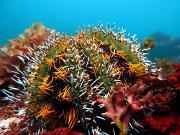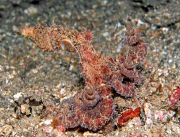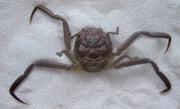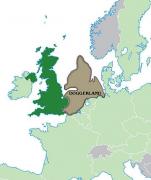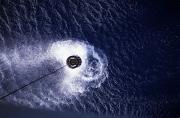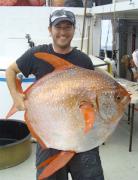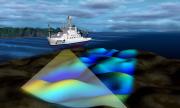Radio Program
Our regular Science and the SeaTM radio program presents marine science topics in an engaging two-minute story format. Our script writers gather ideas for the radio program from the University of Texas Marine Science Institute's researchers and from our very popular college class, Introduction to Oceanography, which we teach to hundreds of non-science majors at The University of Texas at Austin every year. Our radio programs are distributed at to commercial and public radio stations across the country.
Sea urchins have some of the best defense mechanisms around. Sharp spines jab any predators that try to grab them. And tiny, venomous fangs on the end of long stalks snap at the predators.
One species of urchin adds one more layer of defense. It can launch hundreds of the little fangs into the water around it. That creates a defensive screen that helps keep the predators at bay.
The collector sea urchin is found in warm, shallow waters at several locations around the world. It’s most common in Australia, especially on the Great Barrier Reef.
The algae octopus uses an elaborate camouflage scheme to stay safe. It can change the color and shape of structures on its body and arms to make it look like an algae-covered shell.
When that doesn’t work, though, it has another defense mechanism: Run! It can hoist its body on two of its eight arms and skedaddle, running as fast as it can swim. In fact, it’s one of only two species of octopus that’s known to run on two “legs.”
Ocean creatures don’t have to be big to be loud. One of the loudest of all is only a couple of inches long. But it produces “bangs” that are louder than a gunshot. And biologists are just beginning to study what makes them pop off.
Snapping shrimp are found in coral and rocky reef systems around the world. They look like tiny lobsters, with one claw that’s much bigger than the other.
A small crab in Japanese waters has a pattern on its back that looks like the face of a fearsome samurai. Legend says the crabs are the reincarnated spirits of warriors of the Taira clan, who drowned themselves to avoid capture more than 800 years ago. Today, the scientific name for the crabs honors the warriors: Heikeopsis japonica -- the Japanese Taira clan.
The doctorfish sounds like it should scurry from reef to reef, healing other fish along the way. In reality, though, the name tells us that the fish is dangerous: It can inflict nasty cuts on rivals and predators using two “scalpels” on its sides.
The doctorfish grows up to about 15 inches long, and can weigh up to about 10 pounds. It has a tall, flat body that’s blue-gray or brown, with vertical stripes on its sides.
A sand bank in the North Sea, between Great Britain and Denmark, has long been a popular fishing ground. Dutch vessels, known as doggers, plied the shallow waters above the bank for cod as early as the 14th century. But others were gathering food there thousands of years earlier -- not by fishing, but by hunting for deer and other animals.
The bank is known today as Dogger Bank, after the Dutch boats. It was the highest region of what’s known as Doggerland -- a land bridge that connected Great Britain to the European mainland during the last ice age.
To a whale, sonar can be the equivalent of a heavy metal concert. The sonar can overpower other sounds, so the whale can’t hear its companions or prey. If the sonar is especially close, it can cause hearing loss. And not to carry the metaphor too far, but the sound may lead to confusion that causes the whales to flee in terror -- and perhaps even strand themselves on the beach.
Sonar sends out pulses of sound, then records the “echo” from submarines, sunken ships, or even the ocean floor. And the sound can travel across hundreds of miles.
Salt marshes cover millions of acres of American coastline, particularly along the Gulf of Mexico. Their shallow, grass-filled waters provide habitat for fish and shellfish, birds, and other critters. They also filter nutrients from runoff, which can reduce the “dead zones” that sometimes form offshore. And, they help limit coastal flooding during tropical storms.
Athletes are always looking for that extra edge -- a way to beat the other guy by running a little faster or hitting a little harder. A fish that looks like a silver plate standing on its rim has found its own edge: it warms its body to well above the surrounding water temperature. That should allow it to swim faster and longer, improve its vision, and keep its organs in good shape as it cruises through cool, dark waters.
The geology of the ocean floor is just as varied and amazing as that of dry land. Mountain ranges stretch across thousands of miles, trenches plunge miles deep, and cracks in the crust look like the furrows of a plowed field.
Yet not only is much of that landscape unseen, it’s unknown. Only a small fraction of the ocean floor has been mapped in as much detail as the land. And large areas have barely been peeked at.

